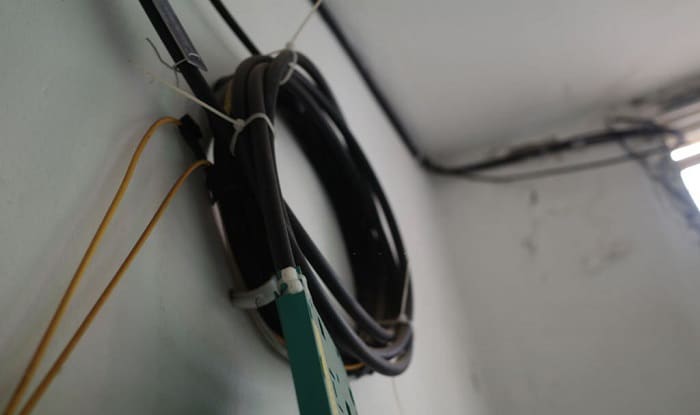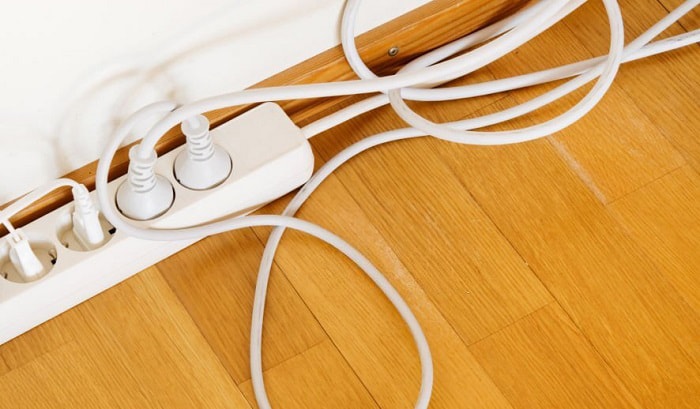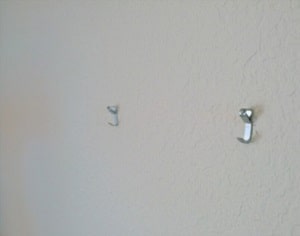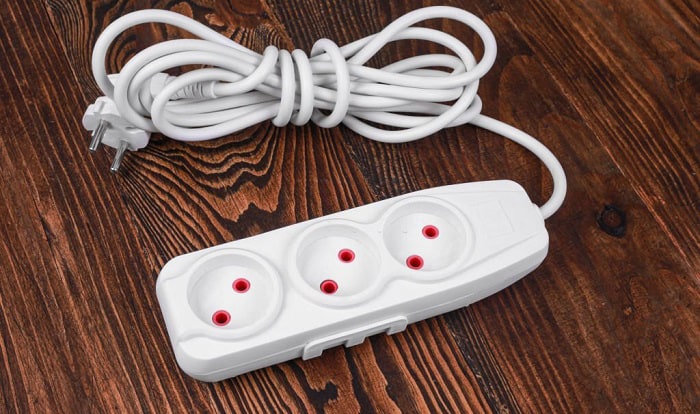Extension cords lying on the floor can become safety hazards. Now, you’re wondering how to secure extension cord to wall?
You can attach extension cord to wall with the help of different objects. Some excellent candidates are cord clips and drywall anchors. But don’t use nails or staples because these fasteners can harm the wiring.
Another option is to hide an extension cord to make an electronic setup as clean and clutter-free as possible. Continue reading to learn more about securing and hiding extension cords.
Table of Contents
Ways to Secure Extension Cord to Wall
What To Prepare
- Cord clips and isopropyl alcohol
- Drywall anchors and drill
- Cable raceway
1. Cord Clips
Cord clips generally come in packs of multiple pieces. Also, these items are quite inexpensive while offering significant value as you secure wires to walls without nails.
Using cord clips is also fairly easy. Generally, these items require you to follow these steps:
- Look at the wall to determine the optimal path for your extension cord and its wire.
- Clean the wall’s surface with isopropyl alcohol.
- Remove the adhesive backing from one of the cord clips.
- Stick the extension cord wall clips to your preferred location.
- Repeat steps 2 to 4 as many times as necessary.
- Run extension cord along wall with the clips as a guide.
2. Drywall Anchors
Take note that drywall anchors are supported for wall fasteners. Careful placement of these items is necessary to avoid harming the extension cord.
If you have the confidence and the DIY know-how, you can attach cable to wall using these anchors by following these steps:
- Put a long piece of paper over the power strip and rub it with a pencil to create a stencil.
- Tape the paper on the wall while making sure it’s in your preferred location for the extension wire.
- Drill pilot holes through the marked areas on the paper and the wall.
- Insert the drywall anchors into the newly drilled holes.
- Put screws into the holes.
- Hang the power strip on the drywall anchors.
3. Cable Raceway
This option won’t only secure the cable to wall, but you can hide the setup in plain sight as well. It may also be ideal to use an extension cord with a built-in wall mount for this method.
Either way, ensure that the cable raceway you’re using is the correct size. Otherwise, your plan to stick cables to a wall and hide them may fail.
It’s a good idea to purchase a raceway with a reasonably large hole. Avoid buying one that makes a snug fit for the wire, particularly when you want to hang extension cords on the wall for a multiple-wire setup.
As for the installation of the cable raceway, the process usually follows these steps:
- Look at the wall and measure the length needed from the extension cord to the nearby outlet.
- Cut the raceway’s length if necessary.
- Mount the cable raceway using the built-in adhesive or with screws.
- Run the extension cord’s wire through the raceway’s hole.
Once the setup is complete, paint the cable raceway’s surface the same color as the wall. This procedure is one of the ideas to hide cords that you may use. But you can also leave the raceway unpainted if the material complements the room’s design.
Helpful Tips
Don’t use fasteners that can puncture the extension cord and its wiring. In other words, it’s ideal not to staple extension cord to wall.
Also, don’t use nails to pin extension cables to walls or other surfaces. In doing so, the nails can ruin the cord, causing problems like short circuits.
Other things to take note of when you want to stick cables to a wall are:
- Avoid bending or coiling the cords while using them.
- Avoid running the cords under furniture, rugs, and upholsteries.
- Don’t daisy-chain or connect multiple extension cords.
- Stop using extension cords that feel hot as soon as you attach them to an outlet.
- Only use cords marked for outdoor use when you want to attach them to outside wall.
Conclusion
Now, you should know how to secure extension cord to wall. Take note that you shouldn’t harm or tamper with the wire as you fasten your assembly to the wall.
Keep in mind that some techniques to secure a power strip to a wall may require some degree of DIY knowledge and skill. If you feel that you don’t have these traits, you may need to consult the help of someone that possesses them.

I am Edwin Jones, in charge of designing content for Galvinpower. I aspire to use my experiences in marketing to create reliable and necessary information to help our readers. It has been fun to work with Andrew and apply his incredible knowledge to our content.




